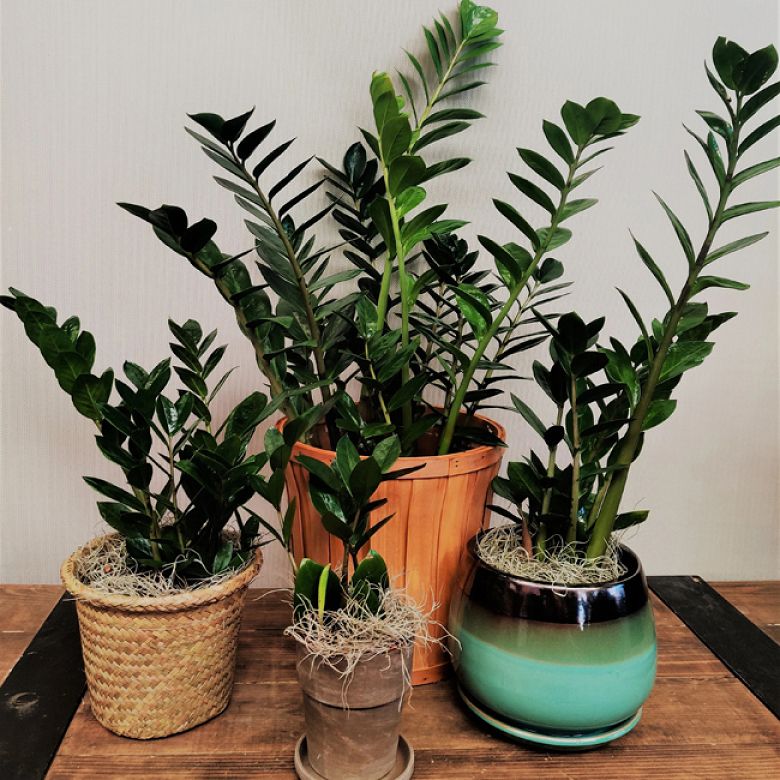
It is known with many different names ( zamia, zamiokoulkas, zamioulkas etc) and here are some features that make it ideal for indoor plant.
Before we go in details about zamia let us introduce it you properly!
Zamia has its origins from East Africa and belongs to Araceae family.
Along with philodendron, spathiphyllum and aglaonema coexist with us for decades ( although it is massively product in Greenhouses in Holland since 1990)
Its base has swallen roots from where the green parts of the plant begin.
The leaves of Zamia have a natural glow as if someone has sprayed them.
Be careful not to make contact with the juices of the plant because they contain crystalls of axalate calcium and can irritate your skin.
Although zamia cam multiply quickly it grows rather slow.
As a plant in perfect conditions does not grow more than 1 meter ( the average is 40 - 70 cm) but if it is planted in a big pot it can spread a lot.
This fact makes zamia ideal for places that we want to fill with low greeneries.
If we choose a big and tall pot we can make the plant look taller.
It is durable at indirect light circumstances ( but it needs some light) and can be left unwatered.
It does not need a special soil.
Α full balanced fertilizer ( 20-20-20 or xl-60 are the best for zamia) and application once per month for the best results, or even once every 3 months are enough to provide your zamia with the nutrients it needs.
The fertilizer is best to be dissolved in water and water the plant with it.
The best place to place your zamia is a bright one, although it can last at indirect light circumstances.
Keep it away from the sun ar it will burn.
The swallen part of the root is used as water storage. This means that the soil should be dry than wet.
If you water your plant too much the first sign is yellow leaves. Also if the pot has plate you should empty it.
You can understand if your plant needs water when you touch a fat branch of the plant near the root and it is soft. if it solid you do not water.
Zamia prefers hot temperatures since it comes from Africa.
The lowest is 10-12 celsious and the ideal temperature for growth is 22-35!
Avoid cold waves of air ( near a window)
Finally if you come across a yellow leaf just remove it.